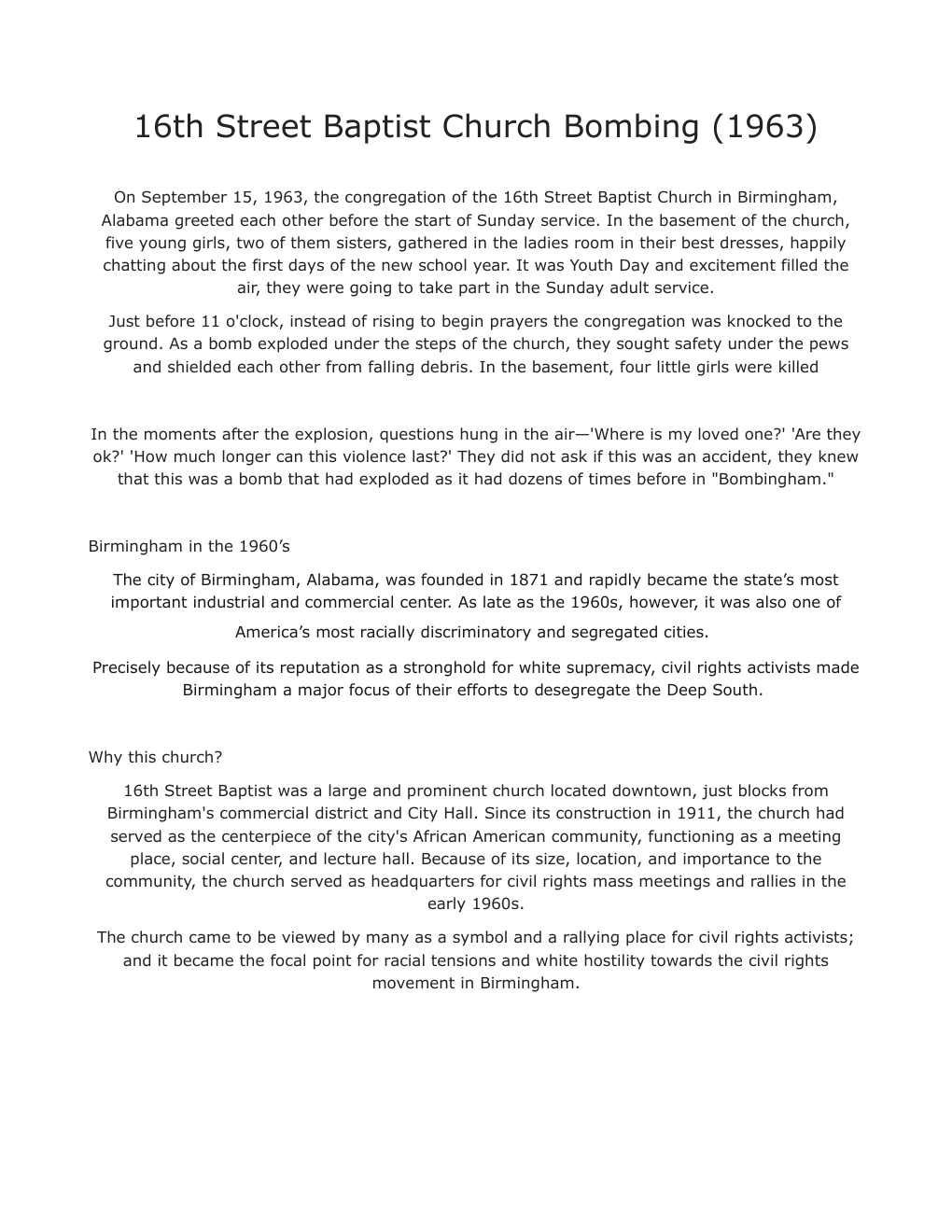church bombing
Publié le 16/04/2023
Extrait du document
«
16th Street Baptist Church Bombing (1963)
On September 15, 1963, the congregation of the 16th Street Baptist Church in Birmingham,
Alabama greeted each other before the start of Sunday service.
In the basement of the church,
five young girls, two of them sisters, gathered in the ladies room in their best dresses, happily
chatting about the first days of the new school year.
It was Youth Day and excitement filled the
air, they were going to take part in the Sunday adult service.
Just before 11 o'clock, instead of rising to begin prayers the congregation was knocked to the
ground.
As a bomb exploded under the steps of the church, they sought safety under the pews
and shielded each other from falling debris.
In the basement, four little girls were killed
In the moments after the explosion, questions hung in the air—'Where is my loved one?' 'Are they
ok?' 'How much longer can this violence last?' They did not ask if this was an accident, they knew
that this was a bomb that had exploded as it had dozens of times before in "Bombingham."
Birmingham in the 1960’s
The city of Birmingham, Alabama, was founded in 1871 and rapidly became the state’s most
important industrial and commercial center.
As late as the 1960s, however, it was also one of
America’s most racially discriminatory and segregated cities.
Precisely because of its reputation as a stronghold for white supremacy, civil rights activists made
Birmingham a major focus of their efforts to desegregate the Deep South.
Why this church?
16th Street Baptist was a large and prominent church located downtown, just blocks from
Birmingham's commercial district and City Hall.
Since its construction in 1911, the church had
served as the centerpiece of the city's African American community, functioning as a meeting
place, social center, and lecture hall.
Because of its size, location, and importance to the
community, the church served as headquarters for civil rights mass meetings and rallies in the
early 1960s.
The church came to be viewed by many as a symbol and a rallying place for civil rights activists;
and it became....
»
↓↓↓ APERÇU DU DOCUMENT ↓↓↓















